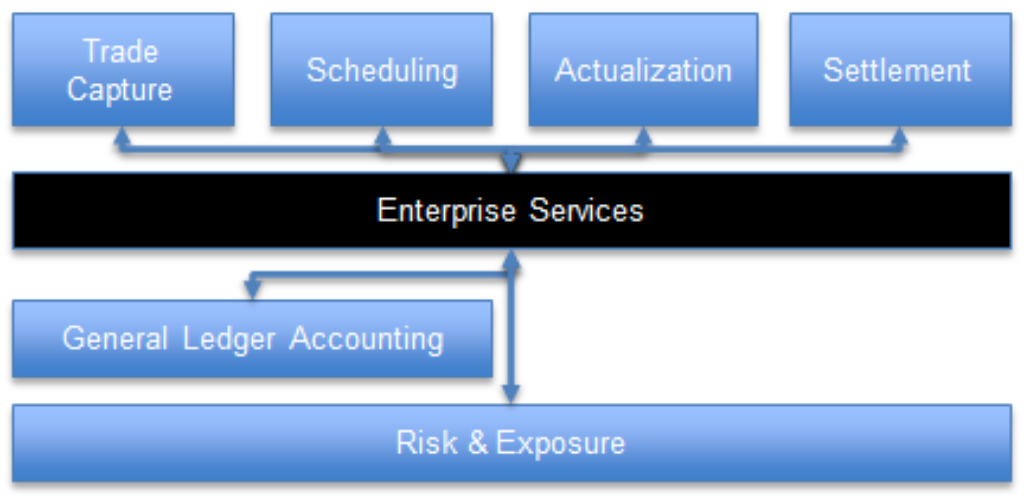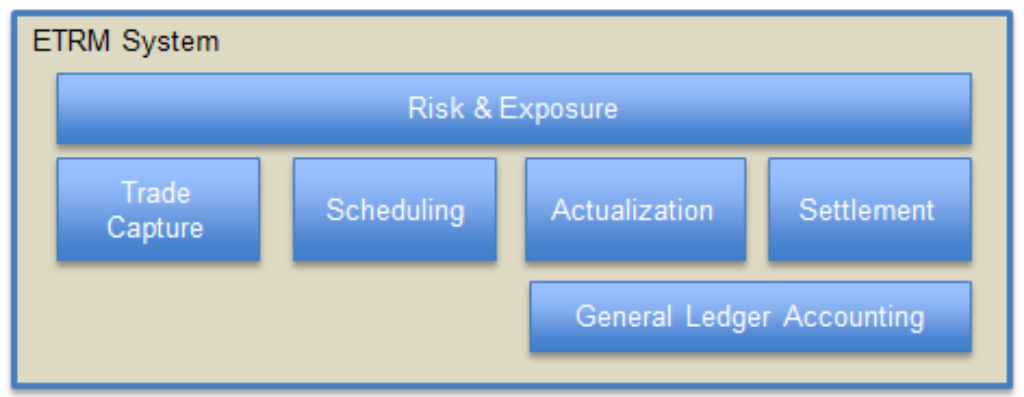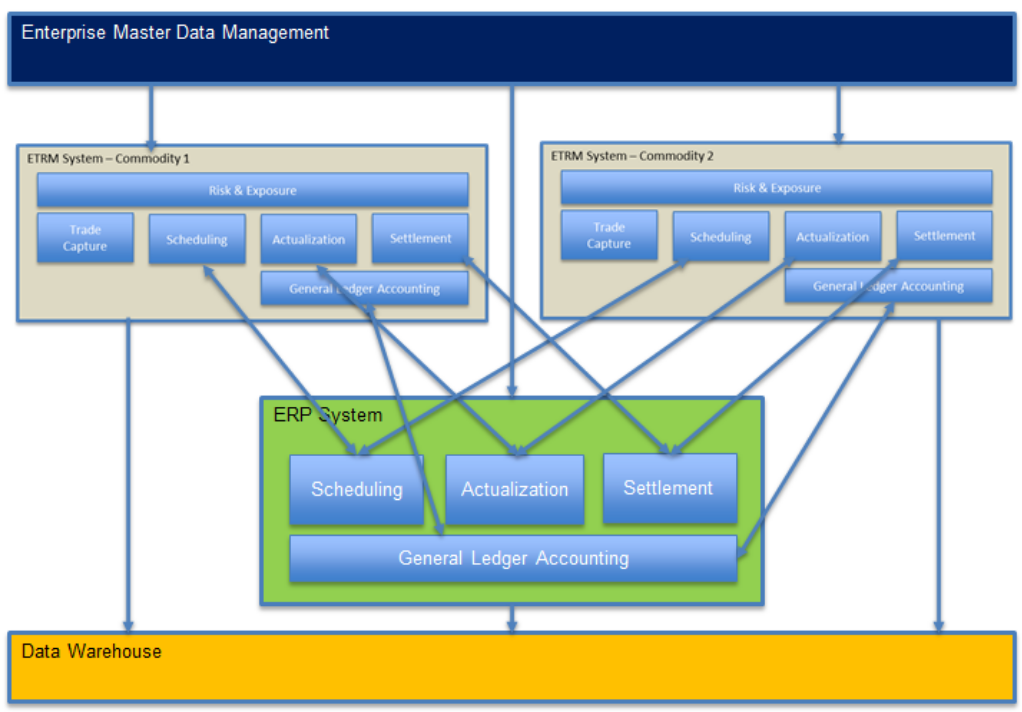Postmodern ETRM: Why Technology Should Impact Your Investment Decisions in Trading Systems

Due to advanced pricing and capacity planning capabilities, the energy trading and risk management (ETRM) system continues to fill critical functional gaps in the recording, processing and settling of commodity transactions across the oil and gas industry. However, many of these solutions are showing their age. They’re built on older technologies, which haven’t adapted well to changing business conditions, nor have they facilitated accelerated deployment methodologies like Agile. As a result, new ETRM implementation costs continue to rise, as do ongoing support and maintenance costs.
Software companies for many non-ETRM solutions within oil and gas have turned to “postmodern” concepts like cloud-centric architectures and digital strategies to mitigate costs, but the technology architecture for most commercially available ETRMs isn’t conducive to leveraging these concepts. Understanding the advantages of these “postmodern” capabilities is critical to developing a strategic architectural approach, which could provide a scalable, reliable, affordable, and fit-for-purpose technology stack that enables more effective trading and risk management capabilities.
ETRM Technology Challenges: A Historical Perspective
ETRM systems have evolved since their beginnings as custom software solutions developed internally by trading houses. These early solutions focused first on providing the ability to record trades (initially just financial instruments, then expanded to physical trades), and then further expanded to provide a framework for capturing the full transactional life cycle through financial settlement. Over time, these bespoke systems evolved and were “productized” into many of the software offerings that have been mainstays of the ETRM software industry over the last two decades.
“The postmodern architecture reduces the complexity of your overall framework and provides a pathway to rapid innovation and adaptation to changing business requirements.”
Software providers have faced a difficult challenge with expanding that initial functional footprint. While derivative trading concepts can be complex, the transaction recording is straightforward and has only become less complex as financial market regulations have increased over the past 20 years. Physical markets, however, can have several important nuances by the combination of commodity and mode of transportation that drive different requirements critical to successful trading within each market.
As most of the major ETRM systems were originally custom solutions, their technical architectures are based on technologies common at the time of their initial development (recall PowerBuilder or Delphi, anyone?). These solutions have gone through some re-platforming over time, but much of their initial architecture remains intact with technology investment into adjacent commodities without much consideration of “postmodern” architectural advantages.
The resulting products provide a robust set of capabilities for particular commodities but are poor fits in others (e.g., one might work well for exchange-traded derivatives, but poorly for crude cargos). An additional burden of this legacy platform is that older technology architectures are difficult and expensive to integrate into other systems, such as enterprise resource planning (ERP), due to their monolithic architecture. Furthermore, ETRM transaction processing capabilities result in structured business datasets that are often “trapped” within the ETRM’s data model, unable to be easily consumed by the enterprise for advanced analytics or other solutions.
Recent trends of consolidation among ETRM solution providers have reduced the number of vendors, but not the number of product options. Technology updates continue, but they’re often years behind schedule and even further behind market relevancy in a rapidly changing environment. Investment roadmaps for many ETRM products are unclear to current and prospective customers.
ETRM Technology Landscape Is Evolving
The challenges outlined above are not unique to the ETRM space. ERP software vendors, integrators, and customers have grappled with similar sets of issues for several years. Gartner, for example, has explored this challenge in considerable depth in its research of the ERP market, and even coined the phrase “postmodern ERP” to describe the architectural approach of leveraging multiple systems, and/or system components, to satisfy differing administrative, operational and control requirements.
In the ETRM sector, consolidation of the major vendors has reduced the number of players, but it hasn’t reduced the number of potential software products, nor led to increases in product investment. However, a new class of entrants have made meaningful strides in overcoming some of the historical constraints of ETRMs through postmodern technology architectures and modern implementation methodologies.
Key Characteristics Of A Postmodern Solution Include The Following:
- Cloud First – Going beyond simply hosting legacy on-premise solutions or offering software as a service (SaaS) versions to provide true cloud-based digital platforms.
- Modular – Products developed from the ground up to deliver independent capabilities and architected to encourage integration via exposed application programming interfaces (APIs).
- Specialized – User-centric designs engineered specifically to deliver an optimized user experience for certain functions unique to a market or commodity.
- Agile-Enabled – Straightforward configuration options, combined with their modularity and specialization, allows for rapid and iterative implementation.
Solutions With These Capabilities Promise The Following:
- Lower Implementation & Operating Cost – Reduced total cost of ownership driven by shorter implementation cycles and the advantages of scaled cloud platforms.
- Accelerated Roadmaps – Development cycles by component lead to faster deployment and adoption of new functionalities and capabilities.
- Open/Accessible Datasets – Through the application of advanced technical architectures, data accessibility and extendable datasets can be achieved allowing the enterprise to mine value out of their business data.
A New Way Of Looking At The Problem – Postmodern Architecture
How can a company looking to leverage these characteristics deliver solutions required by the business and yet achieve the outcomes listed above?
One approach is to basically componentize the entire ETRM system into a logical unit by commodity or business line. Commodity Technical Advisory LLC suggests as much in their recent whitepaper where they advocate implementing commodity-specific ETRM solutions as a means to achieve optimization for commodity-specific business processes, enable greater user satisfaction, and avoid the complexity of managing multiple commodities in a single, multi-commodity ETRM system. However, this doesn’t go far enough with today’s technology.
Taking this approach gets your enterprise closer by promising Cloud First and Specialized capabilities, but the reality is that you’ll be left with a solution that’s too broad and costly to upgrade consistently, further perpetuating the issues with current solutions—they’re too shallow in many functional areas. Only through true Modular and Agile-Enabled solutions will you be able to accelerate the deployment cycles to keep up with today’s rapidly changing business requirements.
The Following Graphics Show The Differences:


Looking at these two simple models might not make a reduction in complexity immediately apparent, but overlaying an ERP system interaction in a multi-commodity environment makes this clearer:


Postmodern architecture reduces the complexity of your overall framework and provides a pathway to rapid innovation and adaptation to changing business requirements. Getting there requires rethinking your approach to ETRM technology and finding experienced implementation partners to help unlock the capabilities in these areas.
Conclusions & Recommendations
As we examined in “What You Need to Know Before Starting an ETRM Implementation Process”, it’s important to solidify the foundational business strategy and policy decisions underpinning the ETRM program of work before starting a technology project. The next order of business should be to develop a well-reasoned trading and risk solution architecture that:
- Utilizes a well-defined information architecture to build on harmonized master and reference data providing for enhanced analytics, machine learning, and AI.
- Leverages a component-based technical solution to streamline and accelerate system integration and enable cross-application process orchestration.
- Is optimized for the particular function(s) supported to accelerate user adoption and satisfaction while paving the way for automation and data integration (e.g., robotic process automation “RPA”, APIs, etc.)
With the commercial and risk considerations defined and a target architecture in place, the stage is set for a successful ETRM solution selection and implementation that can satisfy the business’ demand for flexibility, cost-effectiveness, and long-term value contribution.
Related Insights
Our experts are here
for you.
When you choose Opportune, you gain access to seasoned professionals who not only listen to your needs, but who will work hand in hand with you to achieve established goals. With a sense of urgency and a can-do mindset, we focus on taking the steps necessary to create a higher impact and achieve maximum results for your organization.
LeadershipGeneral Contact Form
Looking for expertise in the energy industry? We’ve got you covered.
Find out why the new landmark legislation should provide a much-needed boost for the development of carbon capture.




